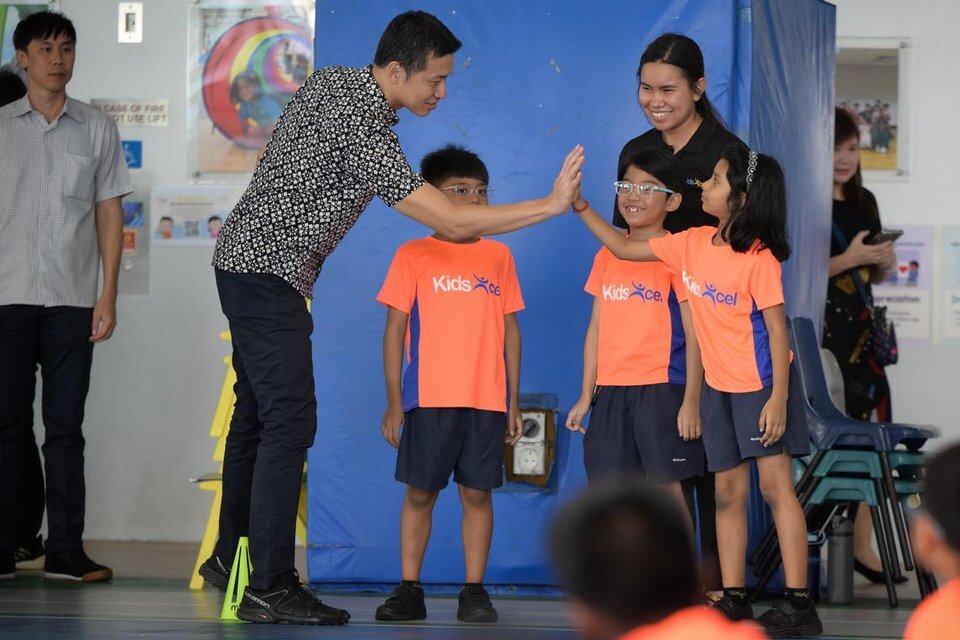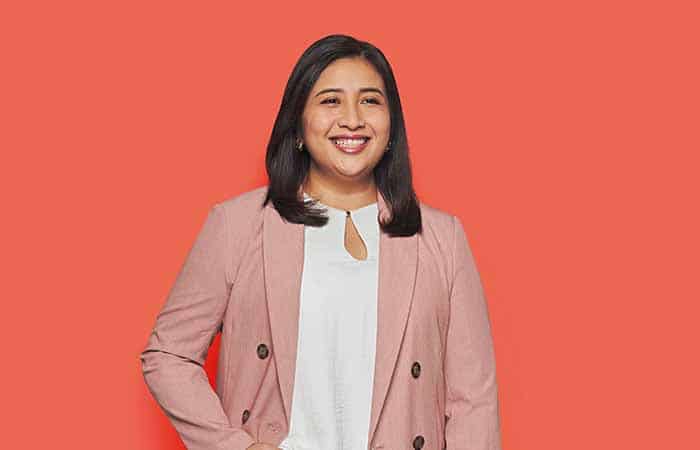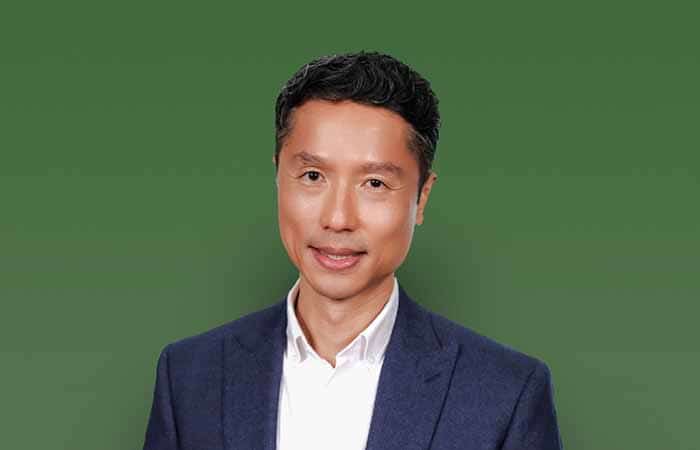Leaving a legacy of giving


Leaving a legacy of giving
Four prominent personalities in the community tells us why they desire to make a long-term impact on society by giving back in their own ways.
Nadia Ahmad Samdin
What is the gap you’ve seen in society’s support of at-risk youth?
Serving as a panel adviser to the youth court and later as a befriender of girls who have done reformative training, I’ve witnessed how at-risk youth and juvenile offenders, who have experienced difficulties, were overcome with feelings of dejection, lack of direction and, oftentimes, betrayal by adults who could have better supported them.
For many, time in institutions or shelters is the difference between being able to access resources such as a safe place to sleep and participate in programmes that build discipline, and getting mental health support.
As a community, we must nurture and empower at-risk youth, especially girls, so they will be able to make better choices and have access to ongoing support. I am an advocate for earlier, consistent intervention followed by better rehabilitation and reintegration upon release. How we embrace them as a society matters.
Why do you feel that being a donor is important, especially for the youths in our society?
A dear mentor once said to me, “Youths are approximately 25 per cent of our resident population today – but 100 per cent of the future.” Giving a young person a chance can be life-changing. It also builds confidence to face the future.
As a donor, beyond the actual funds channelled to scholarships, bursaries, or programmes, your act demonstrates to the youths that someone believes in their potential and provides motivation.
How have your personal experiences impacted your mindset as a lawyer as well as your support of underprivileged families?
I would not have been able to go to law school without financial aid, motivation from mentors and the sacrifices of my family.
Minority women are sometimes under-represented in some of the spaces I serve in. I hope that, in a little way, my efforts will build on the paths of those who came before me and encourage more people to step up and contribute to building Singapore and the future we wish to see.
How do you feel the pandemic has affected the lives of the at-risk youths you work with and their families?
Home-based learning and working from home has been tough for all – and especially for those in one- or two-room flats, adding considerable pressure for sole breadwinners. A number of these families live pay cheque to pay cheque and some bad decisions can feel insurmountable and irreversible. For example, some young mothers are unable to make ends meet and resort to mixing hot water and condensed milk to feed their babies.
The pandemic has also forced those who never had to ask for help before to reach out for aid. The way we live has shifted radically and support must be calibrated for different families in need, ensuring people are not priced out of opportunities here in Singapore.
Hian Goh
What is the gap you’ve seen in society’s support of innovators and entrepreneurs in Singapore?
Today’s Singapore is a developed and well-educated country with strong industries and a bedrock of good law and order built on the foundation of centralised state planning and effective government. Talented Singaporeans have thrived and have many options to be a working professional and make a good living. However, we are also risk-averse.
For Singapore to continue its journey of prosperity and economic development, we need more people to execute new ideas, disrupt industries and create new markets. To do that effectively, we need capital to support these ideas. That is why I decided to become a venture capitalist after my entrepreneurial journey.
How have your personal experiences impacted your mindset in supporting the next generation of gamechangers?
When I was an entrepreneur, there were many times I faced seemingly insurmountable challenges, and it looked like there was no way to solve the problem at hand.
However, through sheer persistence, tenacity and, more importantly, mentors and investors who supported me, I managed to conquer those challenges. This proved to me that a support network of like-minded individuals is essential to increase the probability of success in life.
How has legacy giving changed the way in which you are able to contribute to the support of innovators and entrepreneurs in Singapore?
Once you decide to embark on the legacy journey, it is very important to focus on the programmes which you feel will help your chosen cause. In my case, innovation in Singapore.
To that extent, having someone to guide you on this journey is very important. The Community Foundation of Singapore provides such guidance on a wide range of issues that allows someone like me to work on starting a foundation which, ultimately, will become my legacy and impact many people in the years to come.
Do you feel that age impacts who can be the next greatest innovators or gamechangers?
No. It’s a mindset. I’ve seen older people with flexible minds who can learn from their mistakes. I have also seen younger people too scared to take the leap even though they have nothing to lose. It’s really not a relevant factor.
Dr Audrey Looi and Dr Ang Beng Ti
What is the gap you’ve seen in society’s support of the visually impaired?
When our son James was diagnosed with Stargardt macular dystrophy in 2009, we discovered that support services for children with low vision were not available in Singapore.
In other developed nations, structured low vision programmes already exist. These allow a child’s remaining functional vision to be assessed so a tailored programme can be crafted to facilitate his or her integration into mainstream schools, and to function in a sighted society.
This would include access and training to assistive technology, training in orientation and mobility, and the learning of Braille where indicated. iC2 PrepHouse was set up with these initiatives in mind.
Why do you feel that being a donor and contributing to a cause is important?
Although low vision is a low-incidence disability, affected families are severely impacted. Without the right support by trained vision teachers, there is little chance for the affected child to reach his or her full potential. Our contributions make a difference.
How have your personal experiences impacted your work with healthcare and your support of iC2 PrepHouse?
We have been fortunate that through our combined efforts with our fellow iC2 Board members – all of whom are professionals in the areas of education, law and finance – we have been able to surmount the challenges faced by James as he successfully navigated his way through mainstream school and currently through his undergraduate studies.
Knowing the kind of support needed for this journey, it was not difficult to actively contribute to keep iC2 resources available to other children and families in need. Not just in terms of dollar contribution but also in the oversight of administrative, fundraising and ground initiatives.
As for our work in healthcare, we haven’t stopped striving to be kind and compassionate with our patients as we do our best to solve their medical problems. This journey has certainly deepened our understanding of how important that aspect of medical care is. As medical doctors, we all need to take time to listen and care.
In your opinion, are there groups that need extra support within and surrounding the visually impaired community?
Within the visually impaired group, we know that those with multiple disabilities present greater challenges. Take for example, the child with both low vision and autism or low vision with impaired hearing. A dedicated, thoughtful approach is needed. We have to work with other agencies to coordinate care and support, not just for the child but also for the caregivers.
How has legacy giving changed the way in which you are able to contribute to the support of the visually impaired?
We have and will continue to support iC2 financially through our major fundraising events. So what happens after our demise? Legacy giving provides an avenue to do so for perpetuity.
This is not just for individuals. It can be tailored to couples, families, foundations or companies. Zooming out, if more commit to legacy giving, the charity sector will receive more sustainable donations and be empowered to further improve the groundwork. How truly wonderful that would be for our Singapore society.
Stanley Sia
What is the gap that you saw in Singapore’s healthcare system that led you to SATA CommHealth?
I’ve been involved in SATA CommHealth since 2012. Being in the private sector for all of my career, I’ve always had the desire to contribute in some way to society.
SATA CommHealth, in particular, interested me for its legacy and its resilience in adapting with the times to continue serving the community for more than 70 years. This resonated strongly with me, and has kept me in service at SATA CommHealth for the last eight years. In my time here, I’ve held several portfolios, with the role of chairman being the most recent.
Why do you feel that being a donor is important, especially in the healthcare sector?
While Singapore’s healthcare sector is well developed and provides comprehensive services, more can be done for the seniors and vulnerable through the encouragement of a sustainable donation system beyond simply relying on government support.
About one in every four Singaporeans will be 65 and above by 2030. Singapore’s low fertility rate and its rapidly ageing population will pose an economic and demographic stress to the nation and this is something we need to start preparing for.
Why did you decide to take up the position of chairman of the board in SATA CommHealth?
Covid-19 has changed the way we live, work and interact with each other. It has surfaced new challenges among the seniors and the vulnerable in the community.
When I took on the appointment in July 2020, at the height of the Covid-19 pandemic in Singapore, my immediate priority was to start laying the foundations of a sustainable charity, even as we were steering ourselves through the challenging times.
How has legacy giving changed the way in which you are able to contribute to the support of the healthcare sector?
In the past, the idea of legacy giving was relegated to high-net worth individuals, the ultra-rich and affluent. While few of us are in that position, there is no reason to exclude charitable giving from our estate planning. All gifts, large or small, are important. Charitable giving is life giving to the poor and vulnerable in our society and healthcare sector forms the backbone of a country’s well-being.
Legacy giving lets you make a lasting impact on the lives of future generations, far beyond the measure of your lifetime. It is the best way to benefit a cause or charity that you care about now and in the future.
Source: The Peak
Leaving a legacy of giving
Four prominent personalities in the community tells us why they desire to make a long-term impact on society by giving back in their own ways.
Nadia Ahmad Samdin
What is the gap you’ve seen in society’s support of at-risk youth?
Serving as a panel adviser to the youth court and later as a befriender of girls who have done reformative training, I’ve witnessed how at-risk youth and juvenile offenders, who have experienced difficulties, were overcome with feelings of dejection, lack of direction and, oftentimes, betrayal by adults who could have better supported them.
For many, time in institutions or shelters is the difference between being able to access resources such as a safe place to sleep and participate in programmes that build discipline, and getting mental health support.
As a community, we must nurture and empower at-risk youth, especially girls, so they will be able to make better choices and have access to ongoing support. I am an advocate for earlier, consistent intervention followed by better rehabilitation and reintegration upon release. How we embrace them as a society matters.
Why do you feel that being a donor is important, especially for the youths in our society?
A dear mentor once said to me, “Youths are approximately 25 per cent of our resident population today – but 100 per cent of the future.” Giving a young person a chance can be life-changing. It also builds confidence to face the future.
As a donor, beyond the actual funds channelled to scholarships, bursaries, or programmes, your act demonstrates to the youths that someone believes in their potential and provides motivation.
How have your personal experiences impacted your mindset as a lawyer as well as your support of underprivileged families?
I would not have been able to go to law school without financial aid, motivation from mentors and the sacrifices of my family.
Minority women are sometimes under-represented in some of the spaces I serve in. I hope that, in a little way, my efforts will build on the paths of those who came before me and encourage more people to step up and contribute to building Singapore and the future we wish to see.
How do you feel the pandemic has affected the lives of the at-risk youths you work with and their families?
Home-based learning and working from home has been tough for all – and especially for those in one- or two-room flats, adding considerable pressure for sole breadwinners. A number of these families live pay cheque to pay cheque and some bad decisions can feel insurmountable and irreversible. For example, some young mothers are unable to make ends meet and resort to mixing hot water and condensed milk to feed their babies.
The pandemic has also forced those who never had to ask for help before to reach out for aid. The way we live has shifted radically and support must be calibrated for different families in need, ensuring people are not priced out of opportunities here in Singapore.
Hian Goh
What is the gap you’ve seen in society’s support of innovators and entrepreneurs in Singapore?
Today’s Singapore is a developed and well-educated country with strong industries and a bedrock of good law and order built on the foundation of centralised state planning and effective government. Talented Singaporeans have thrived and have many options to be a working professional and make a good living. However, we are also risk-averse.
For Singapore to continue its journey of prosperity and economic development, we need more people to execute new ideas, disrupt industries and create new markets. To do that effectively, we need capital to support these ideas. That is why I decided to become a venture capitalist after my entrepreneurial journey.
How have your personal experiences impacted your mindset in supporting the next generation of gamechangers?
When I was an entrepreneur, there were many times I faced seemingly insurmountable challenges, and it looked like there was no way to solve the problem at hand.
However, through sheer persistence, tenacity and, more importantly, mentors and investors who supported me, I managed to conquer those challenges. This proved to me that a support network of like-minded individuals is essential to increase the probability of success in life.
How has legacy giving changed the way in which you are able to contribute to the support of innovators and entrepreneurs in Singapore?
Once you decide to embark on the legacy journey, it is very important to focus on the programmes which you feel will help your chosen cause. In my case, innovation in Singapore.
To that extent, having someone to guide you on this journey is very important. The Community Foundation of Singapore provides such guidance on a wide range of issues that allows someone like me to work on starting a foundation which, ultimately, will become my legacy and impact many people in the years to come.
Do you feel that age impacts who can be the next greatest innovators or gamechangers?
No. It’s a mindset. I’ve seen older people with flexible minds who can learn from their mistakes. I have also seen younger people too scared to take the leap even though they have nothing to lose. It’s really not a relevant factor.
Dr Audrey Looi and Dr Ang Beng Ti
What is the gap you’ve seen in society’s support of the visually impaired?
When our son James was diagnosed with Stargardt macular dystrophy in 2009, we discovered that support services for children with low vision were not available in Singapore.
In other developed nations, structured low vision programmes already exist. These allow a child’s remaining functional vision to be assessed so a tailored programme can be crafted to facilitate his or her integration into mainstream schools, and to function in a sighted society.
This would include access and training to assistive technology, training in orientation and mobility, and the learning of Braille where indicated. iC2 PrepHouse was set up with these initiatives in mind.
Why do you feel that being a donor and contributing to a cause is important?
Although low vision is a low-incidence disability, affected families are severely impacted. Without the right support by trained vision teachers, there is little chance for the affected child to reach his or her full potential. Our contributions make a difference.
How have your personal experiences impacted your work with healthcare and your support of iC2 PrepHouse?
We have been fortunate that through our combined efforts with our fellow iC2 Board members – all of whom are professionals in the areas of education, law and finance – we have been able to surmount the challenges faced by James as he successfully navigated his way through mainstream school and currently through his undergraduate studies.
Knowing the kind of support needed for this journey, it was not difficult to actively contribute to keep iC2 resources available to other children and families in need. Not just in terms of dollar contribution but also in the oversight of administrative, fundraising and ground initiatives.
As for our work in healthcare, we haven’t stopped striving to be kind and compassionate with our patients as we do our best to solve their medical problems. This journey has certainly deepened our understanding of how important that aspect of medical care is. As medical doctors, we all need to take time to listen and care.
In your opinion, are there groups that need extra support within and surrounding the visually impaired community?
Within the visually impaired group, we know that those with multiple disabilities present greater challenges. Take for example, the child with both low vision and autism or low vision with impaired hearing. A dedicated, thoughtful approach is needed. We have to work with other agencies to coordinate care and support, not just for the child but also for the caregivers.
How has legacy giving changed the way in which you are able to contribute to the support of the visually impaired?
We have and will continue to support iC2 financially through our major fundraising events. So what happens after our demise? Legacy giving provides an avenue to do so for perpetuity.
This is not just for individuals. It can be tailored to couples, families, foundations or companies. Zooming out, if more commit to legacy giving, the charity sector will receive more sustainable donations and be empowered to further improve the groundwork. How truly wonderful that would be for our Singapore society.
Stanley Sia
What is the gap that you saw in Singapore’s healthcare system that led you to SATA CommHealth?
I’ve been involved in SATA CommHealth since 2012. Being in the private sector for all of my career, I’ve always had the desire to contribute in some way to society.
SATA CommHealth, in particular, interested me for its legacy and its resilience in adapting with the times to continue serving the community for more than 70 years. This resonated strongly with me, and has kept me in service at SATA CommHealth for the last eight years. In my time here, I’ve held several portfolios, with the role of chairman being the most recent.
Why do you feel that being a donor is important, especially in the healthcare sector?
While Singapore’s healthcare sector is well developed and provides comprehensive services, more can be done for the seniors and vulnerable through the encouragement of a sustainable donation system beyond simply relying on government support.
About one in every four Singaporeans will be 65 and above by 2030. Singapore’s low fertility rate and its rapidly ageing population will pose an economic and demographic stress to the nation and this is something we need to start preparing for.
Why did you decide to take up the position of chairman of the board in SATA CommHealth?
Covid-19 has changed the way we live, work and interact with each other. It has surfaced new challenges among the seniors and the vulnerable in the community.
When I took on the appointment in July 2020, at the height of the Covid-19 pandemic in Singapore, my immediate priority was to start laying the foundations of a sustainable charity, even as we were steering ourselves through the challenging times.
How has legacy giving changed the way in which you are able to contribute to the support of the healthcare sector?
In the past, the idea of legacy giving was relegated to high-net worth individuals, the ultra-rich and affluent. While few of us are in that position, there is no reason to exclude charitable giving from our estate planning. All gifts, large or small, are important. Charitable giving is life giving to the poor and vulnerable in our society and healthcare sector forms the backbone of a country’s well-being.
Legacy giving lets you make a lasting impact on the lives of future generations, far beyond the measure of your lifetime. It is the best way to benefit a cause or charity that you care about now and in the future.
Source: The Peak
- Related Topics For You: CHARITY STORIES, DONOR STORIES, DONOR-ADVISED FUND, LEGACY GIVING, NEWS, STORIES OF IMPACT

.jpg)





